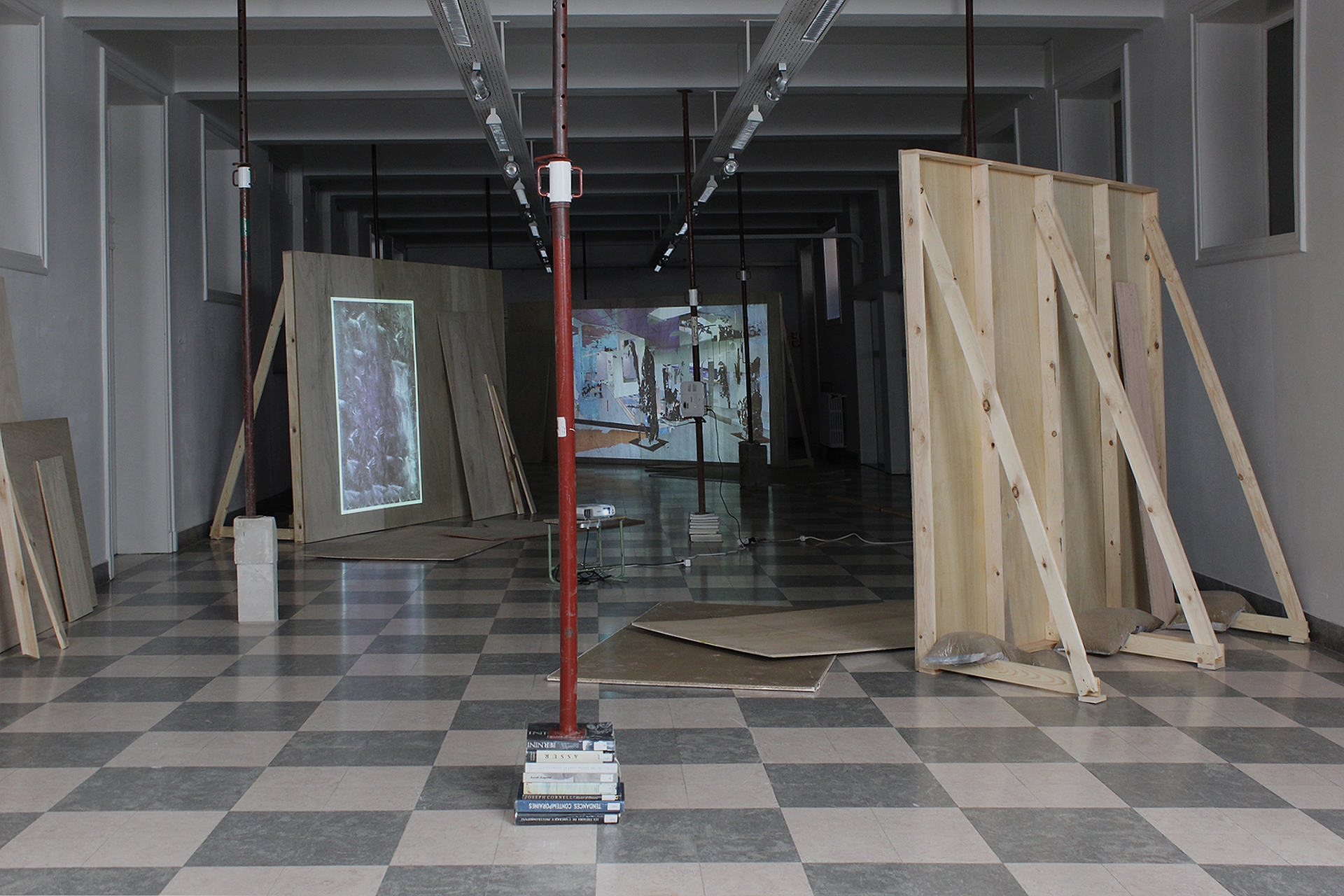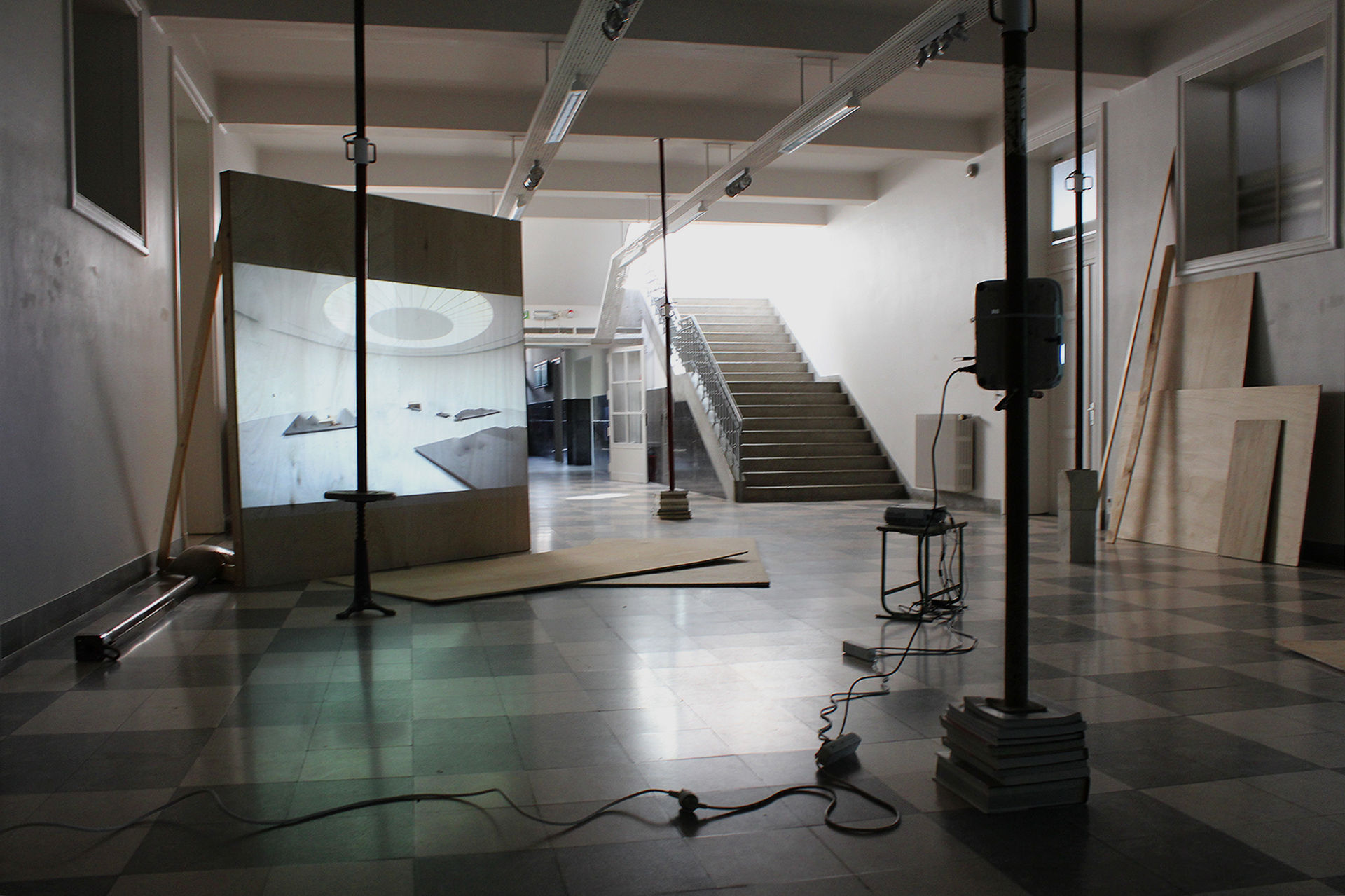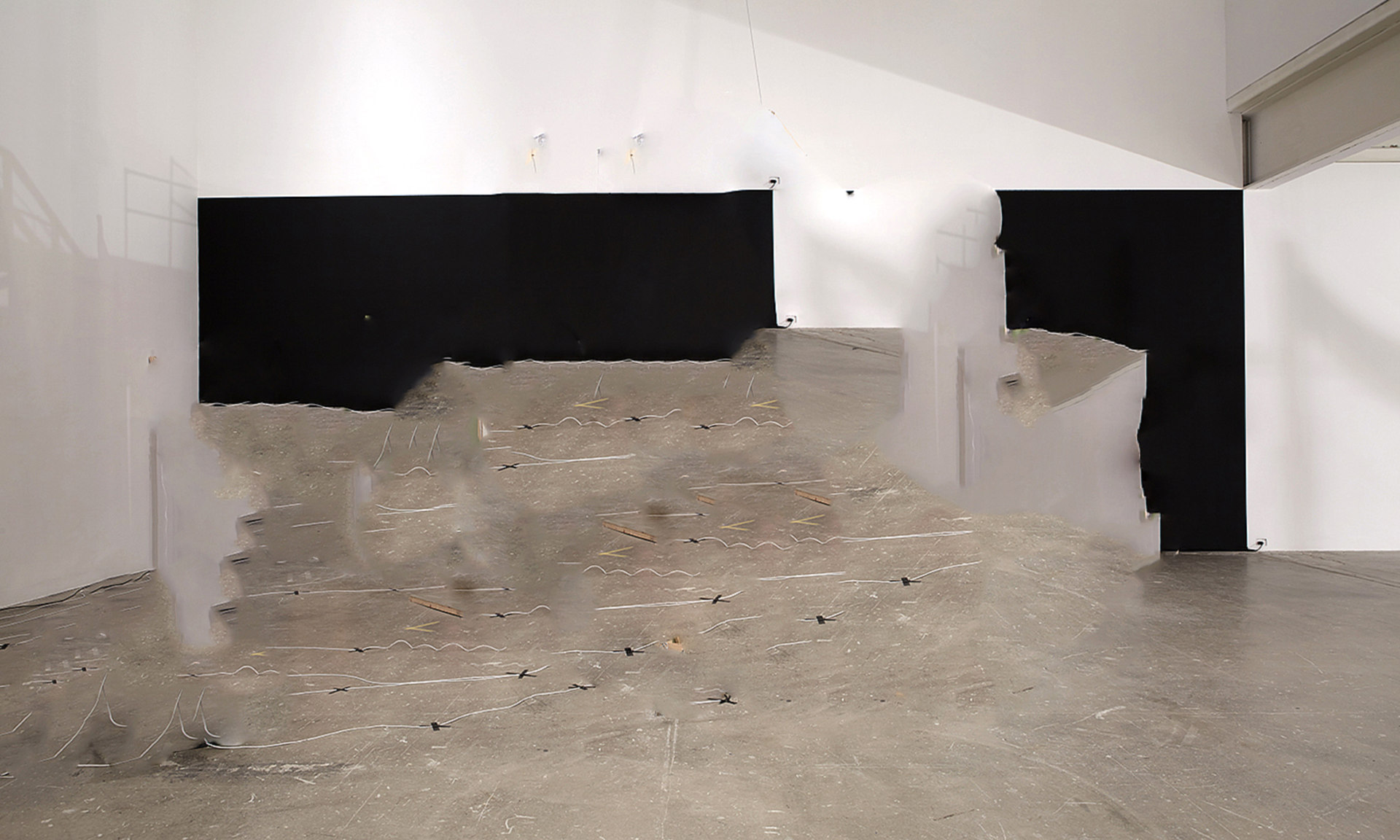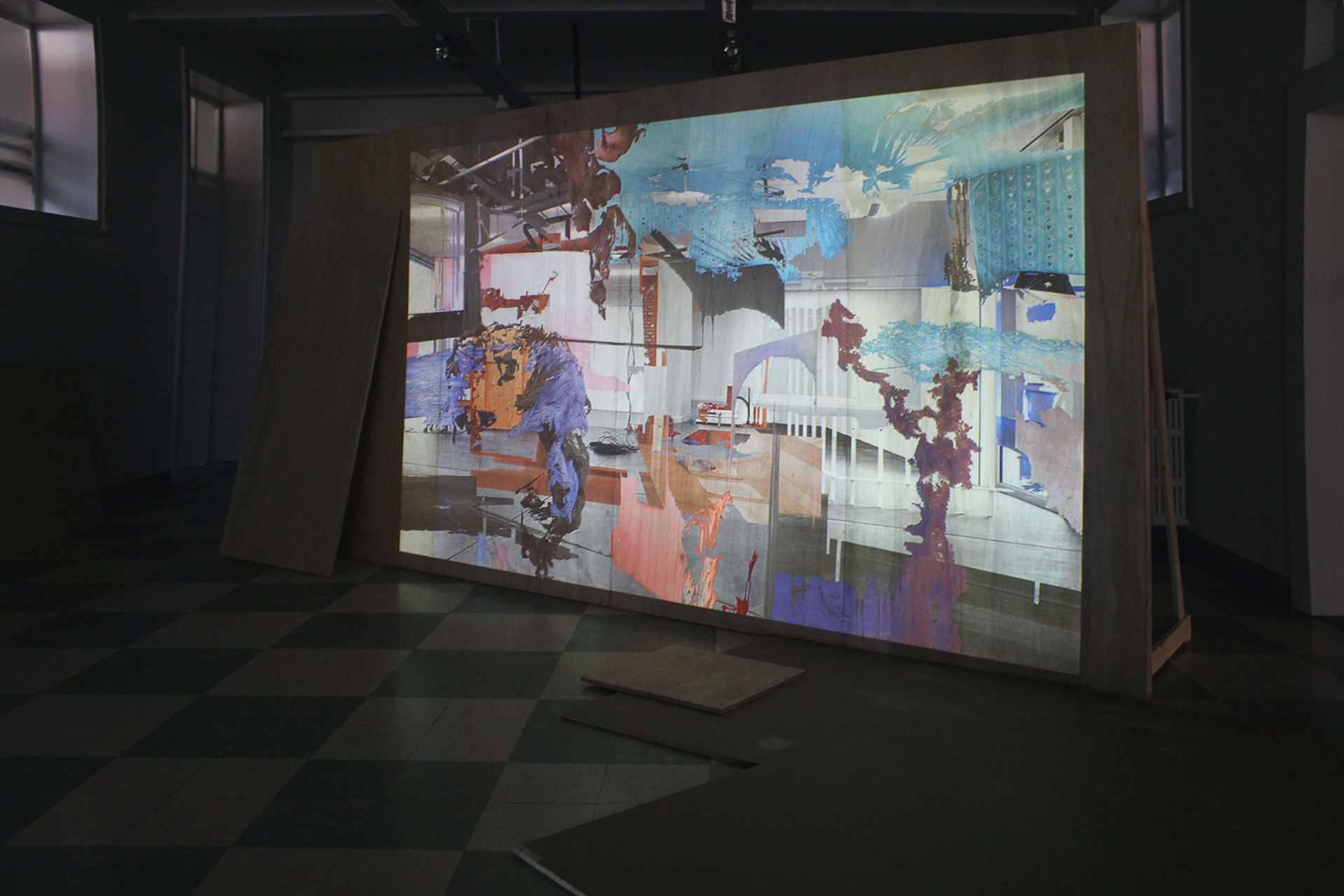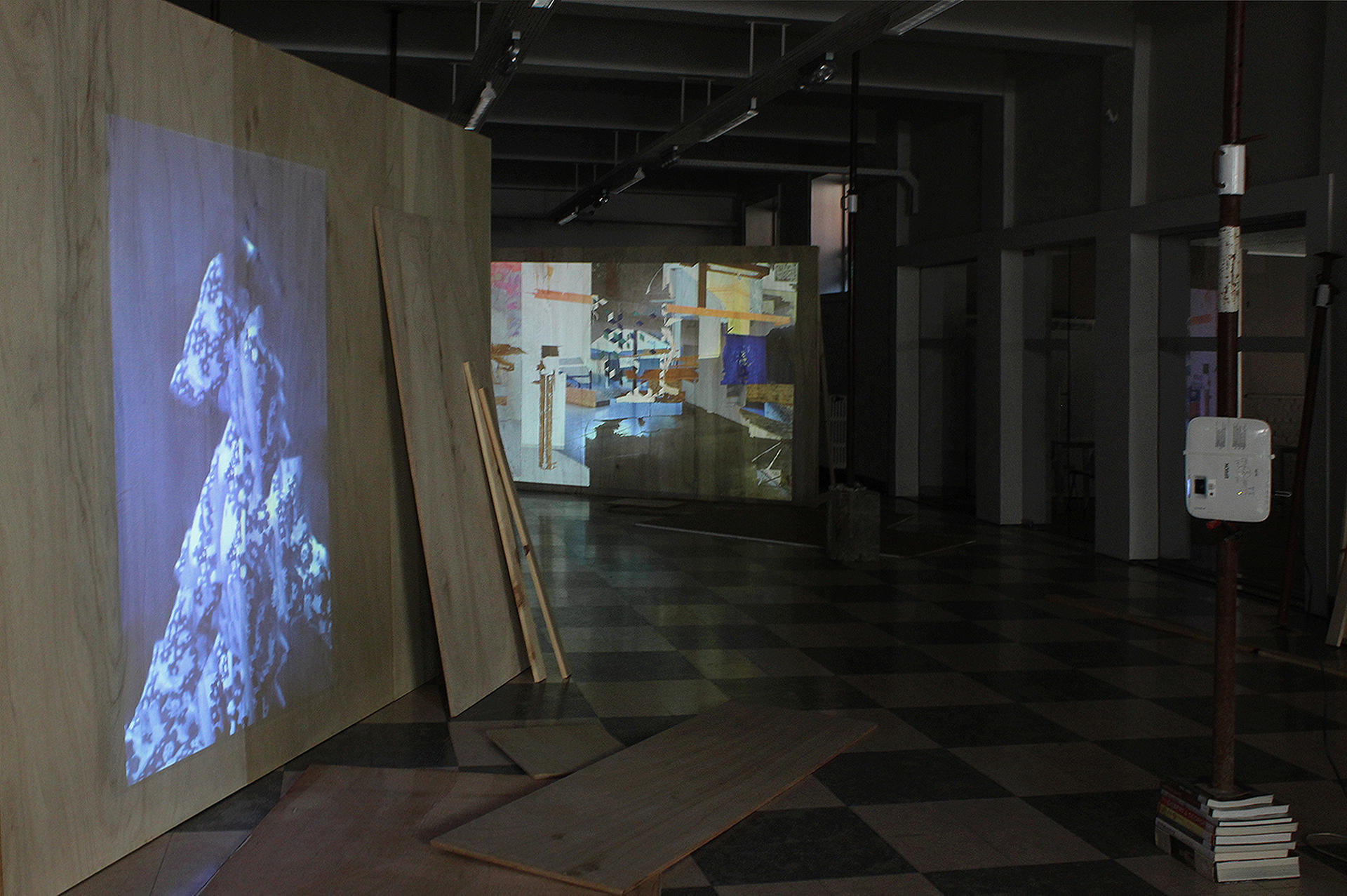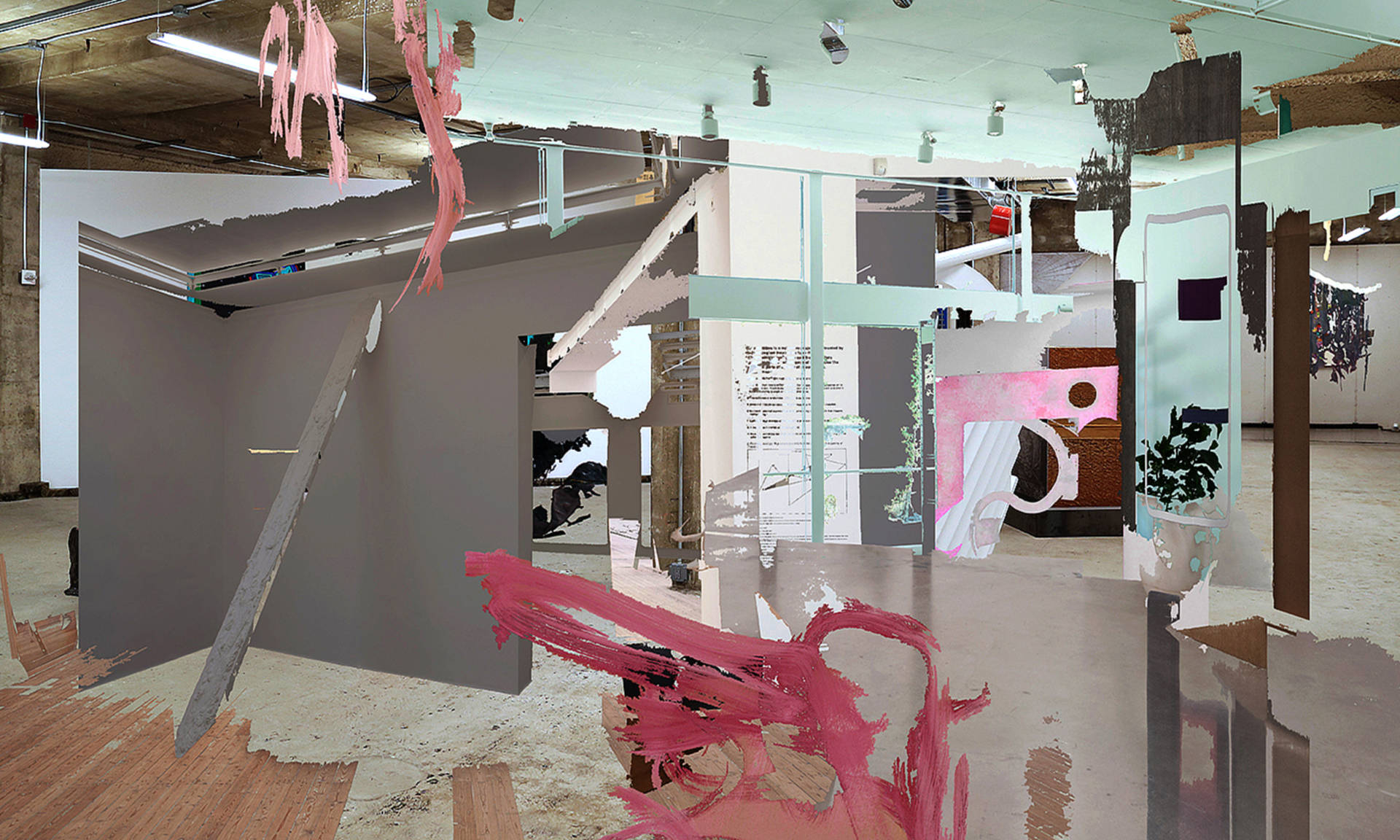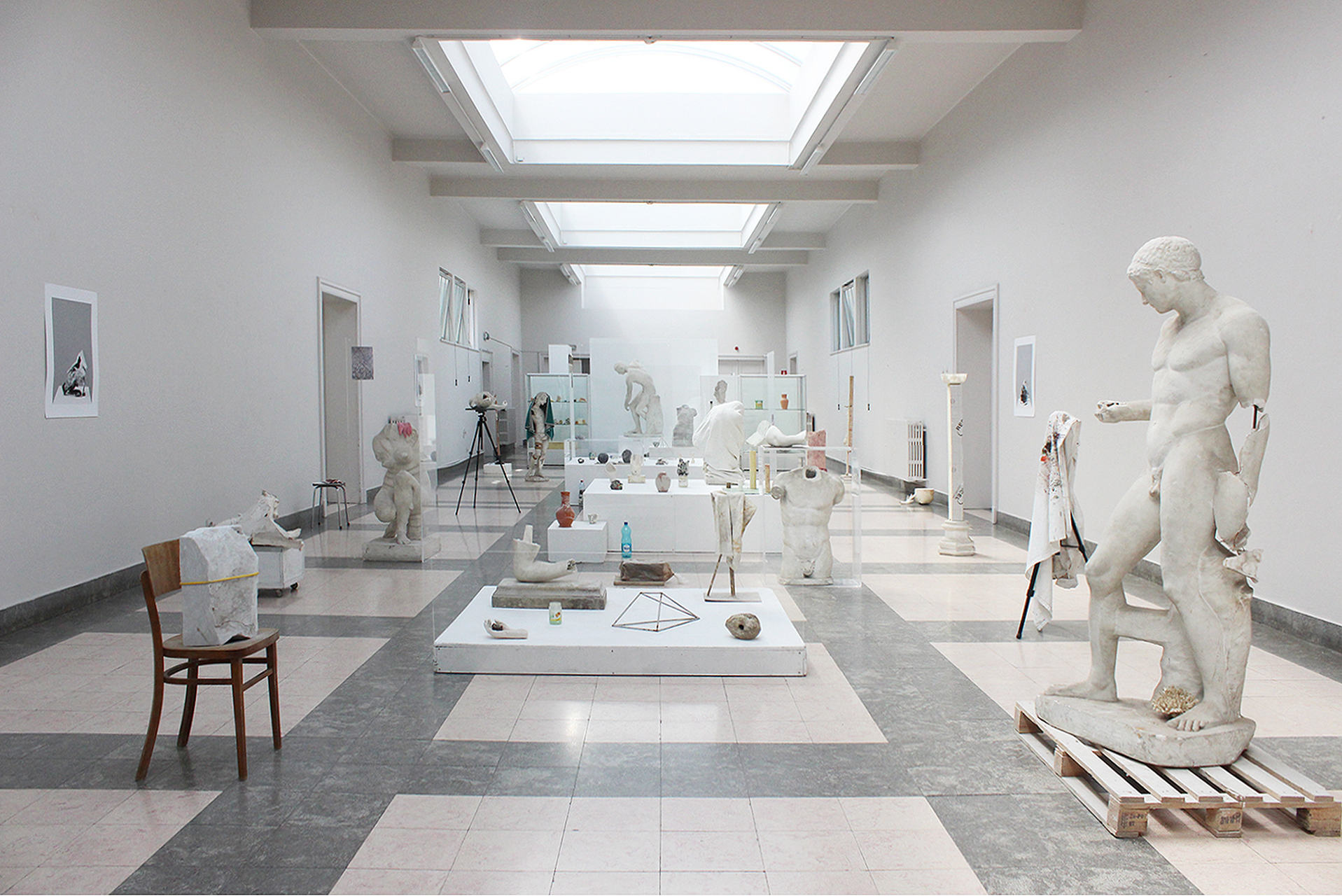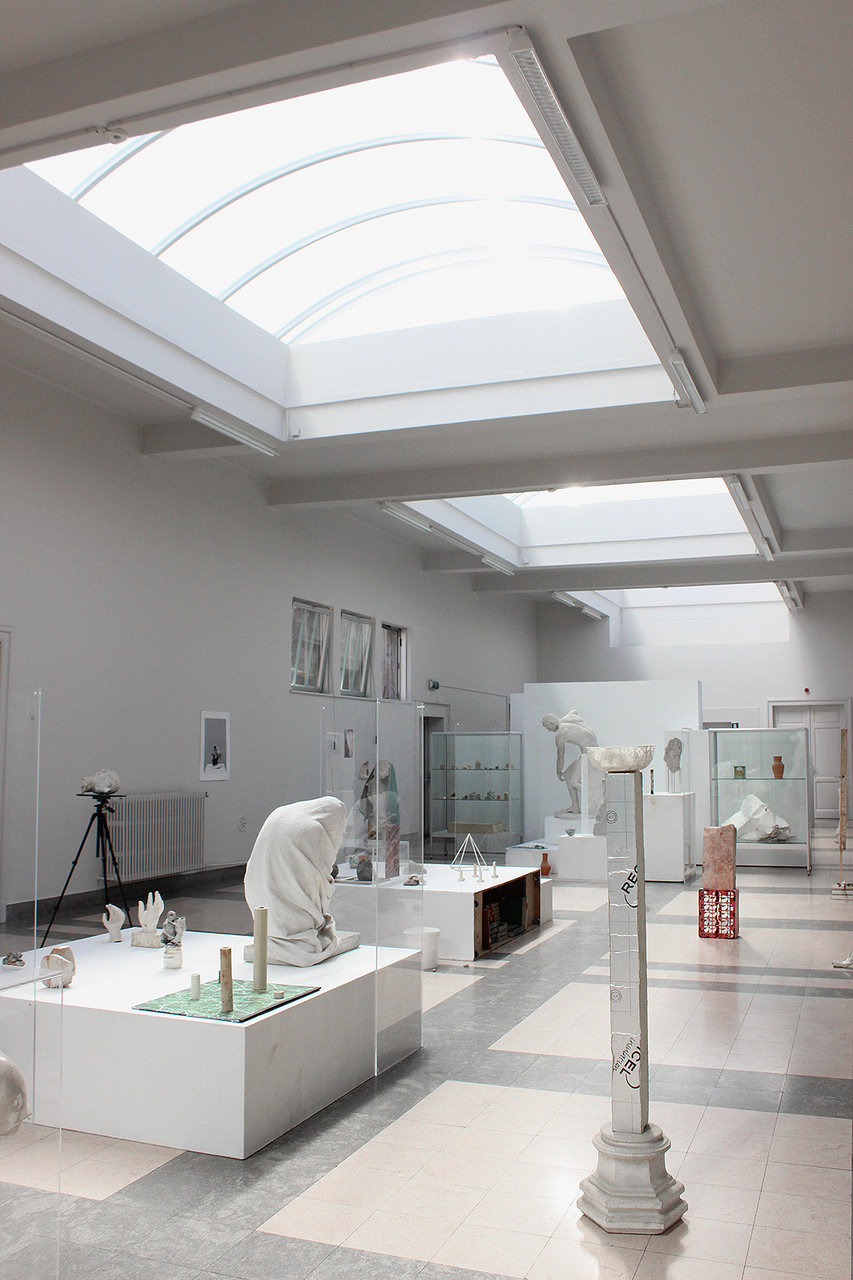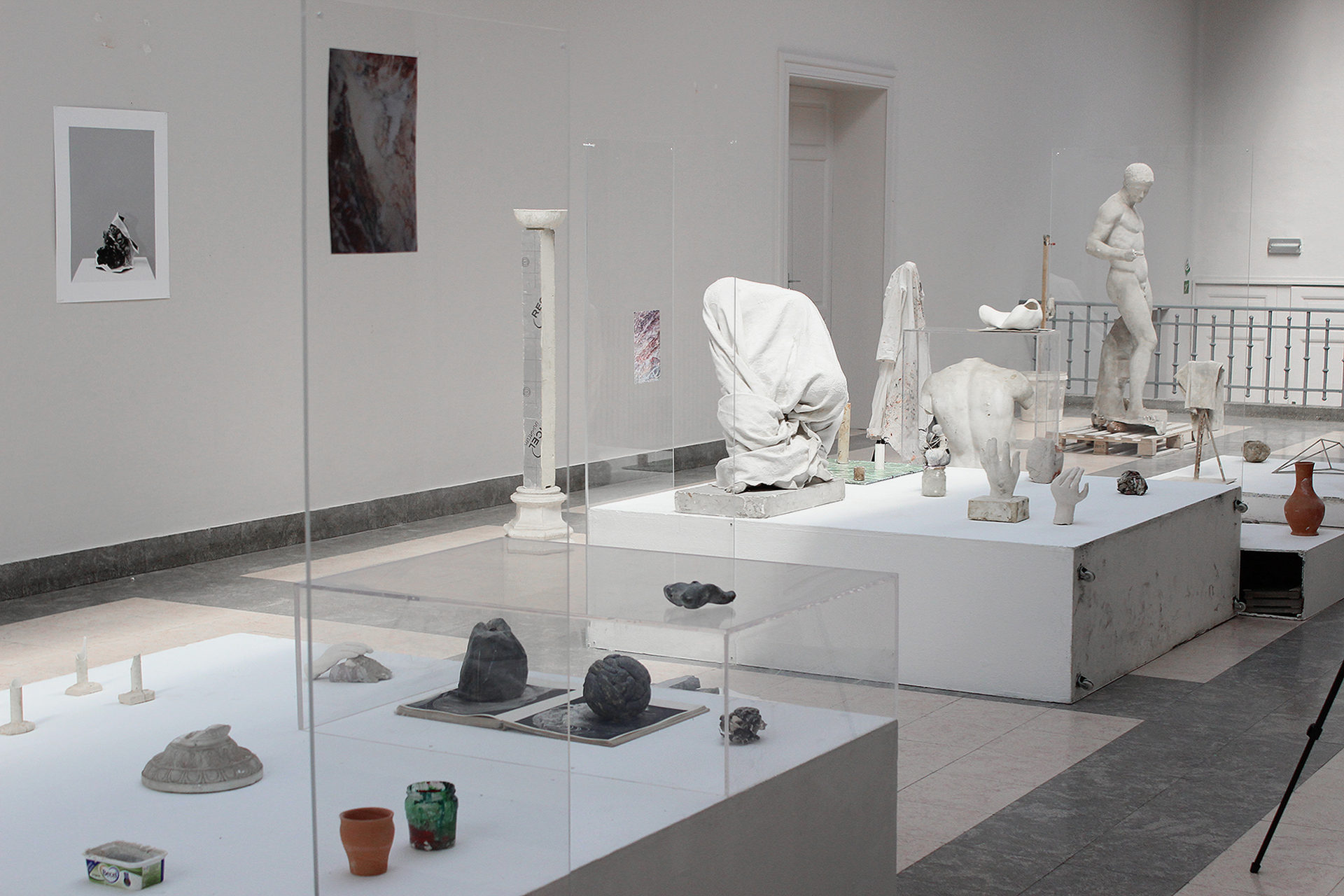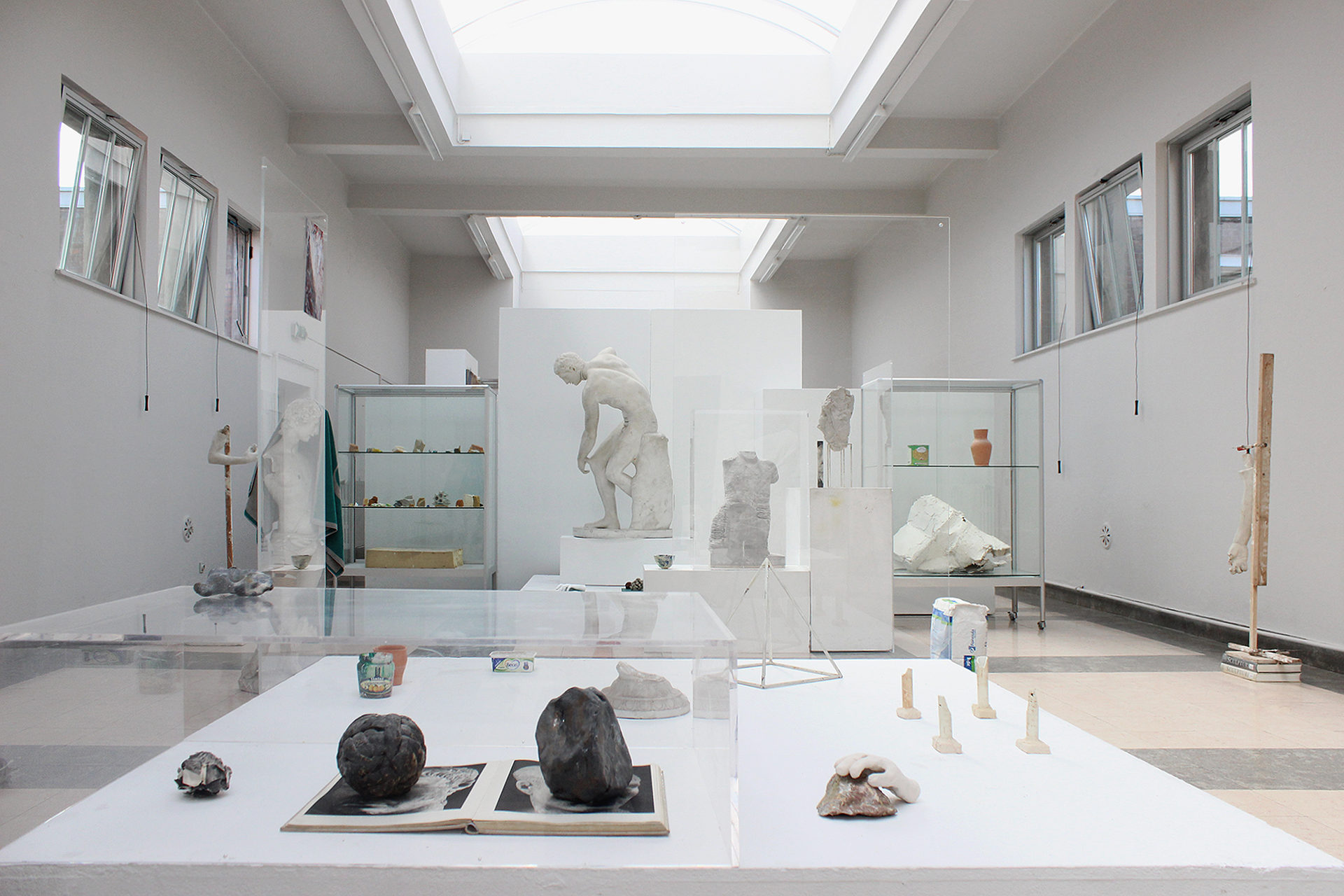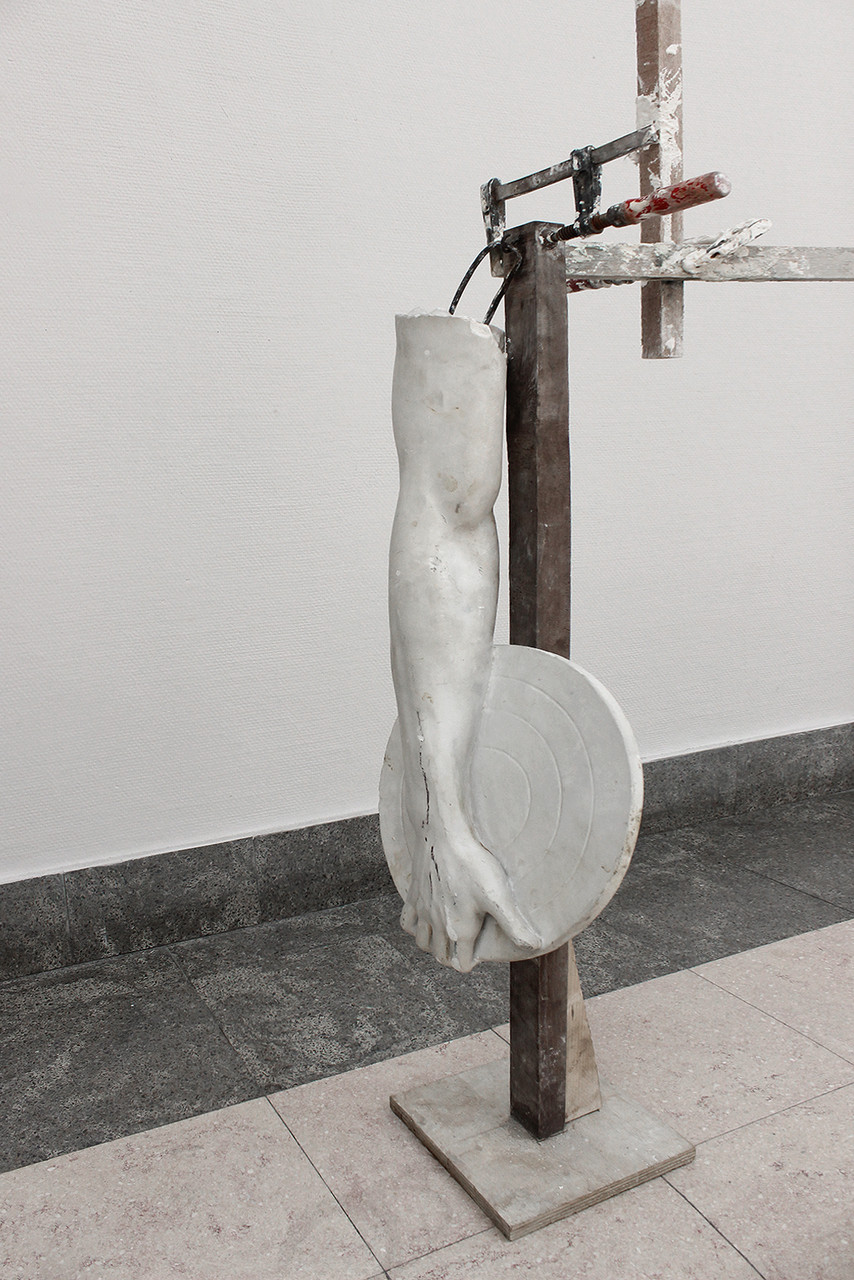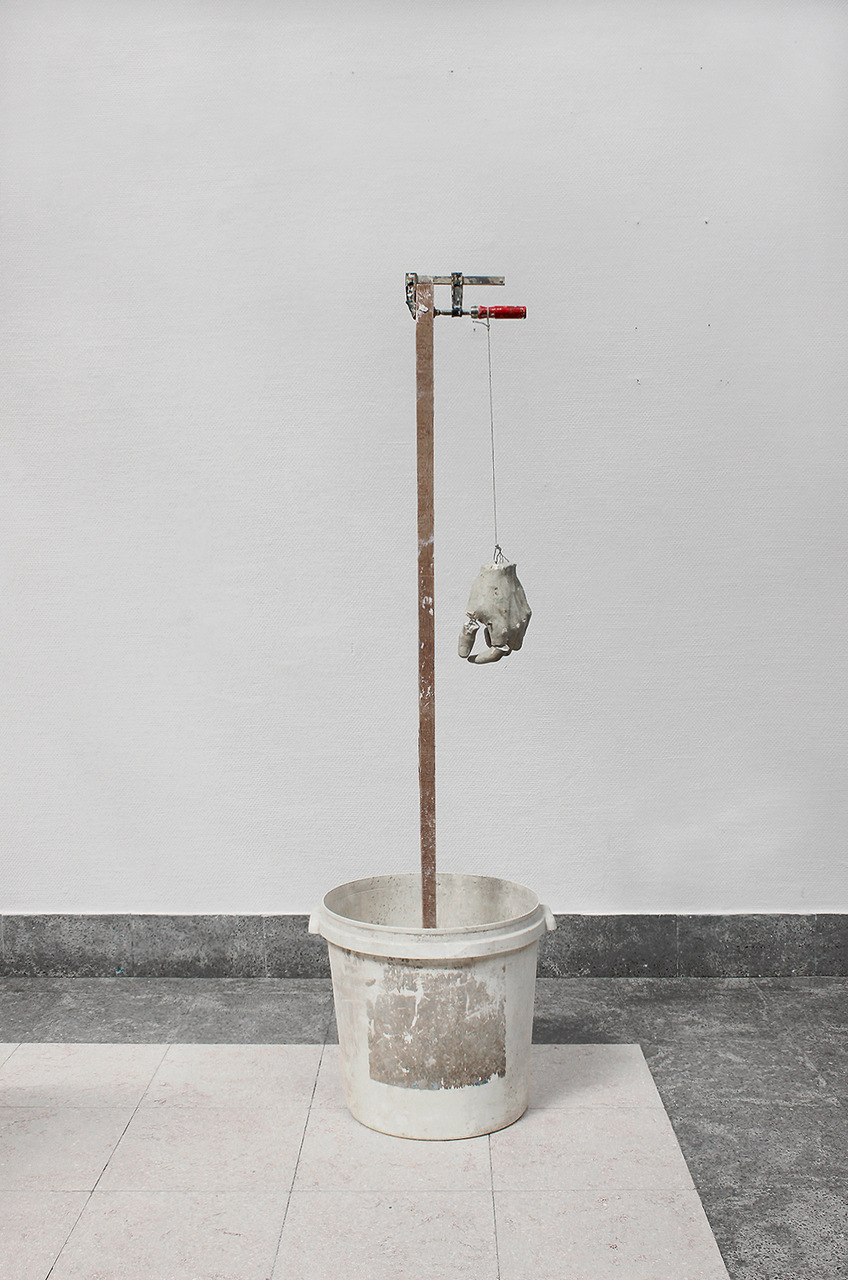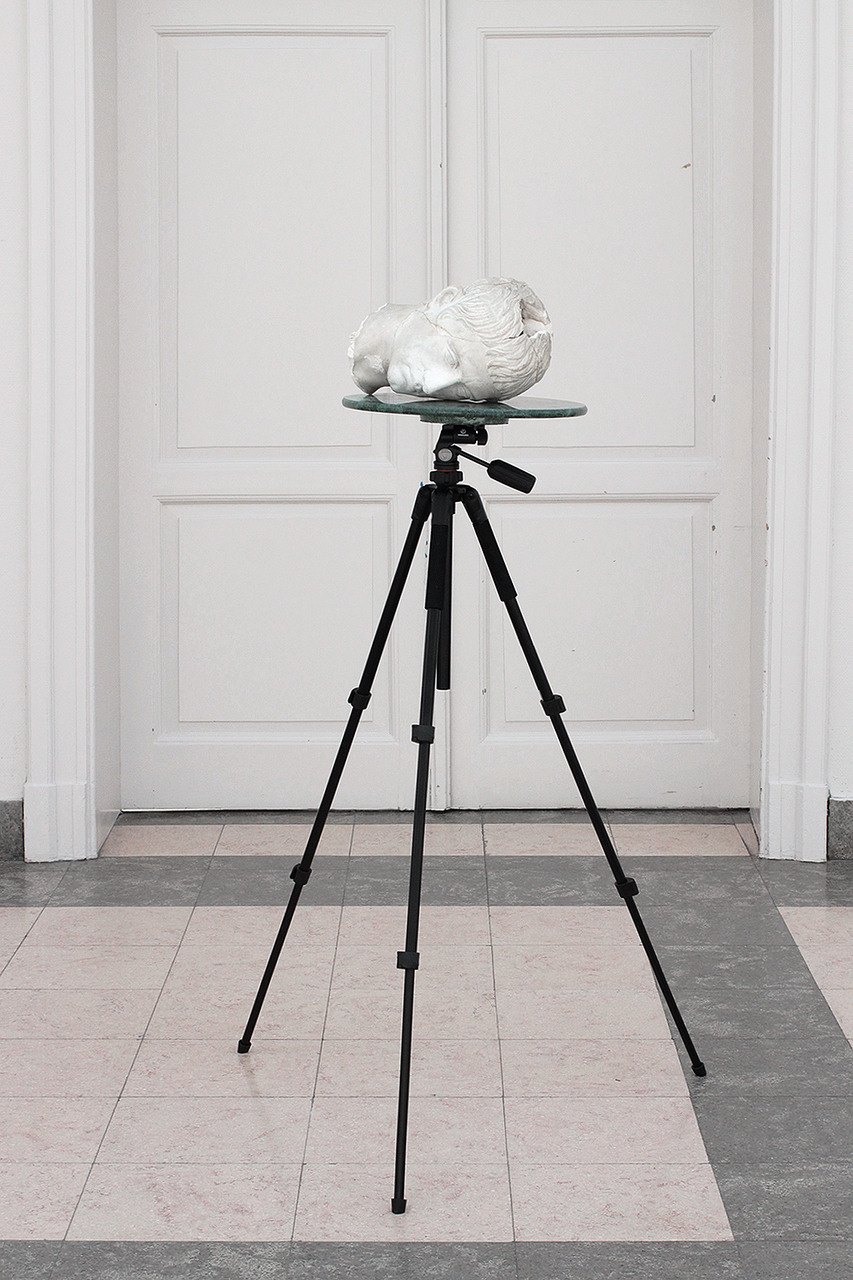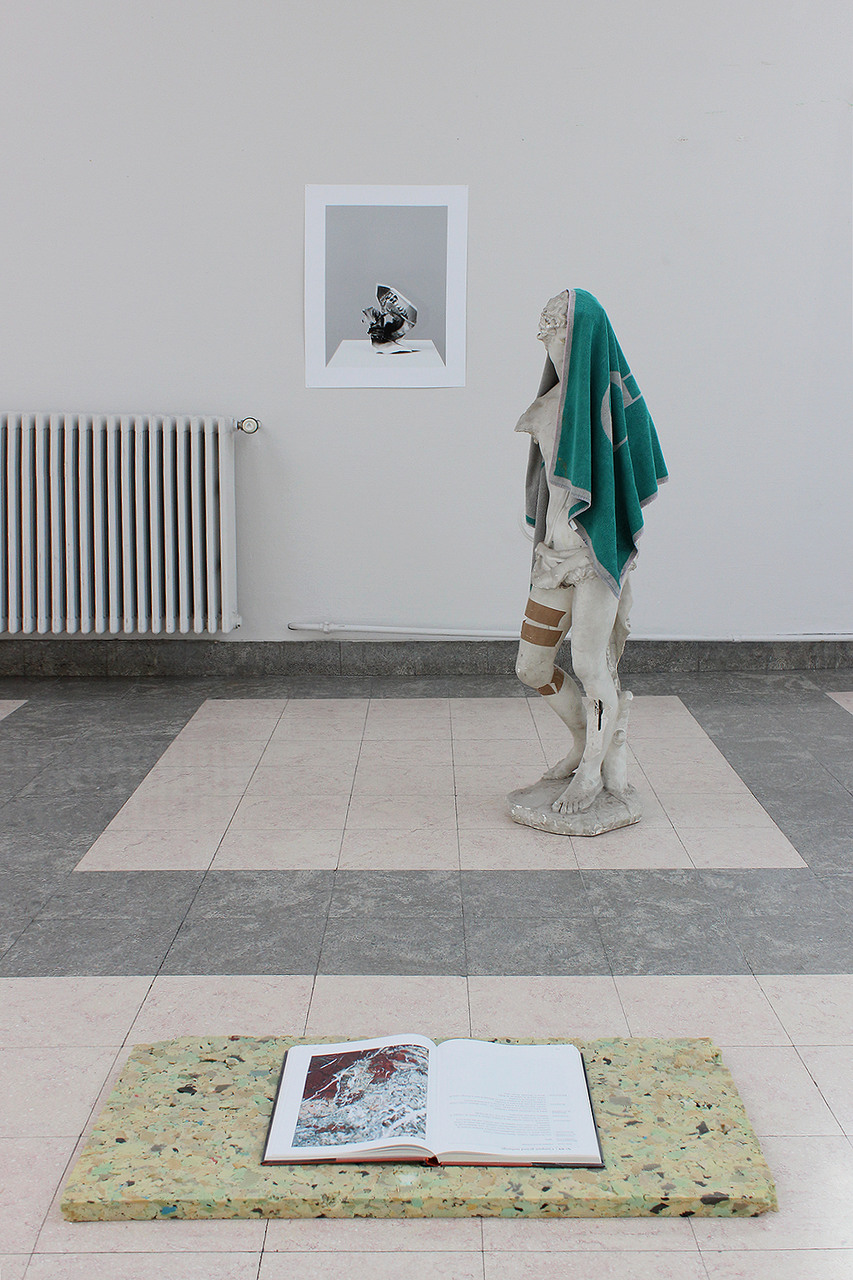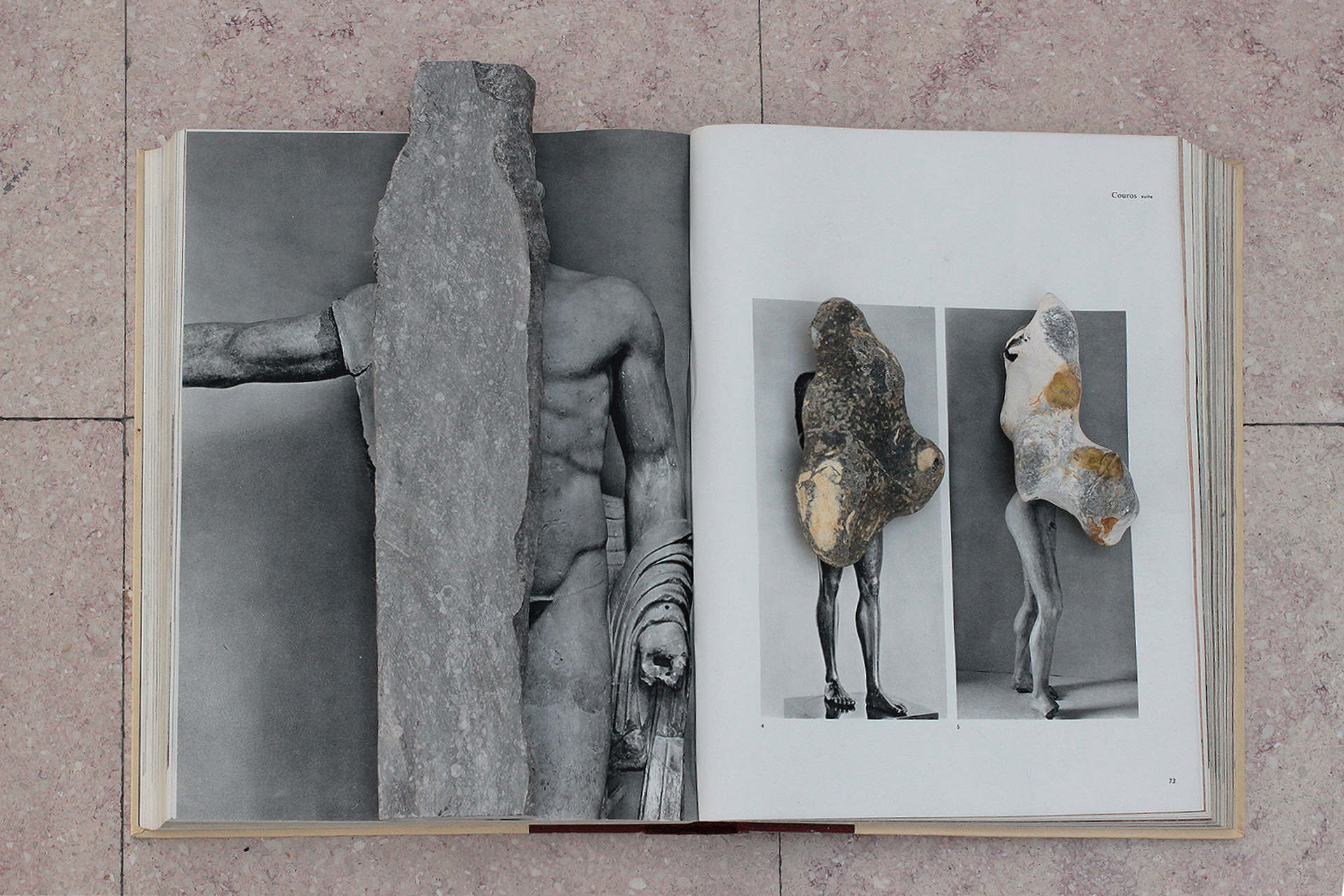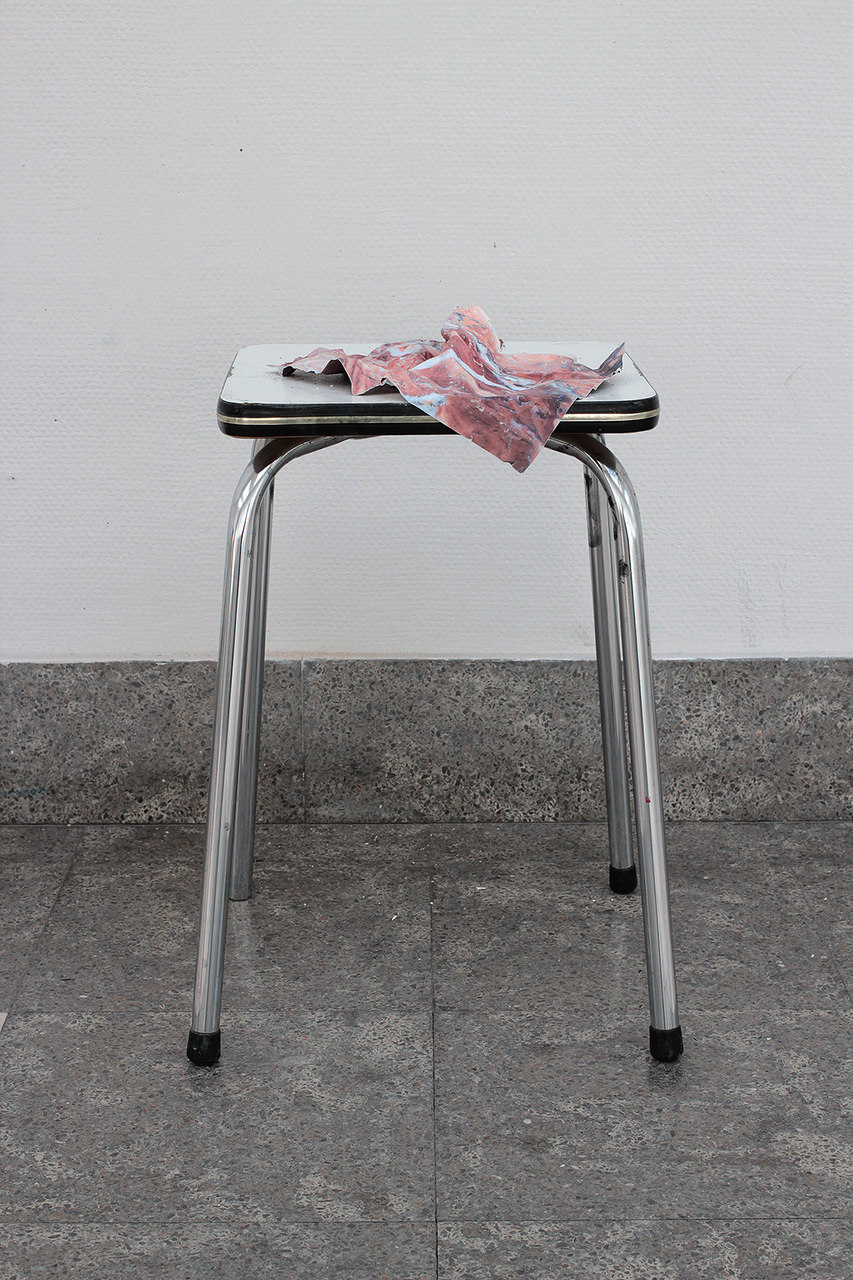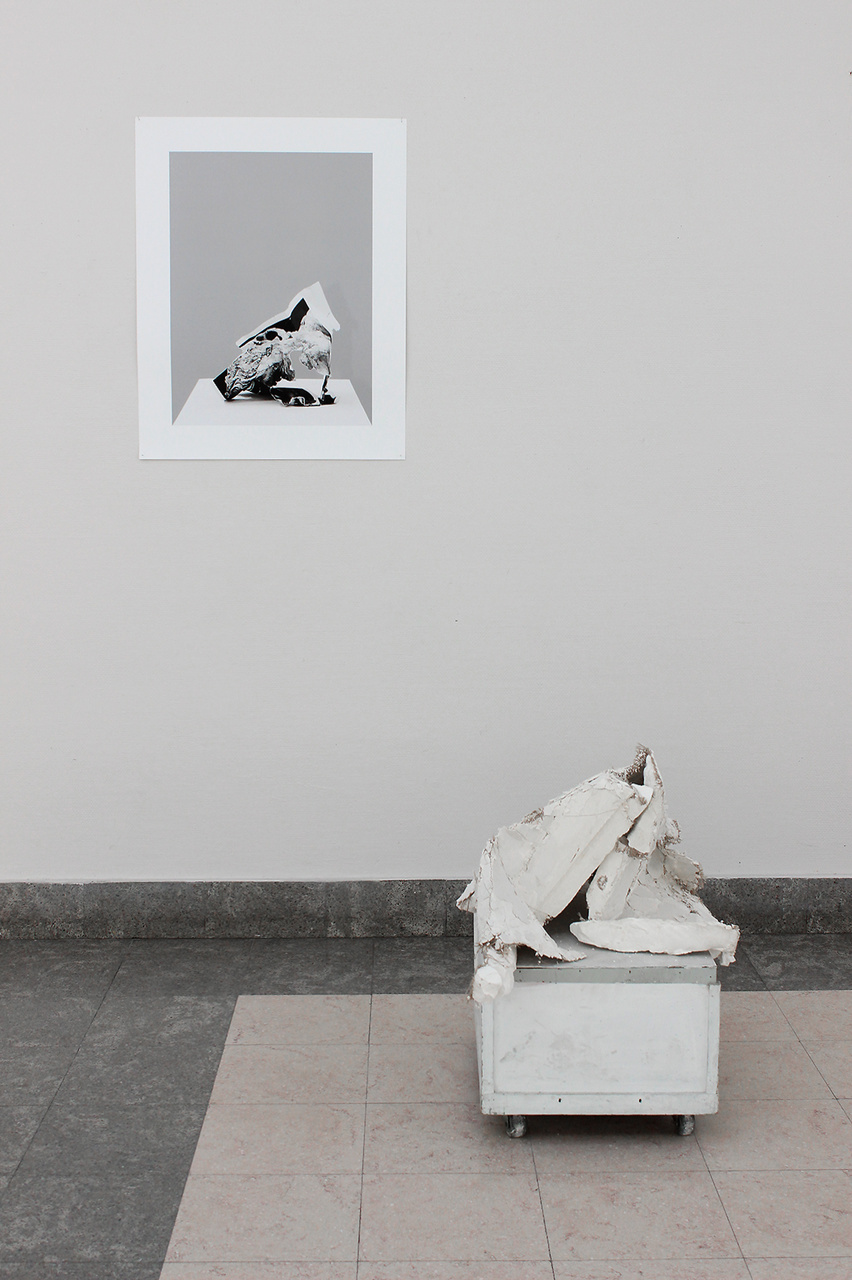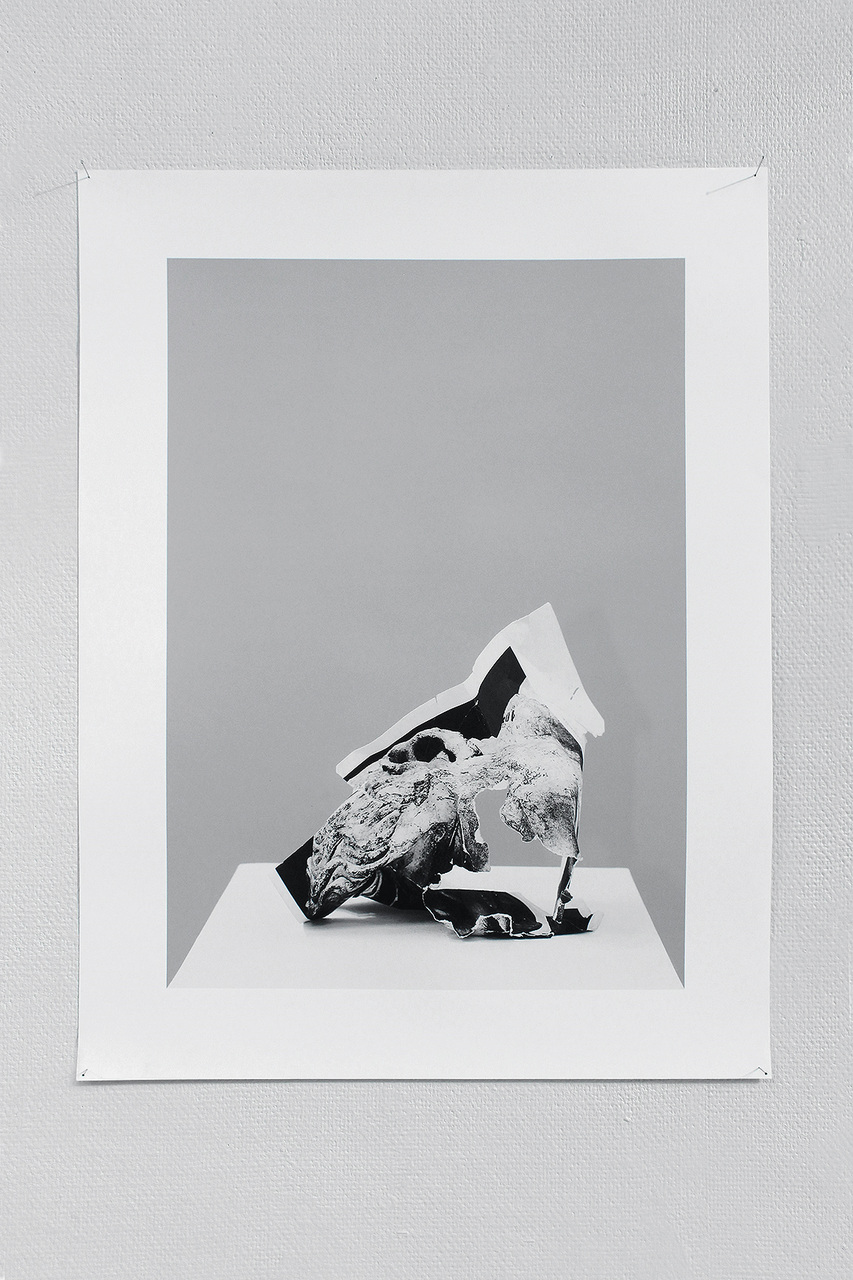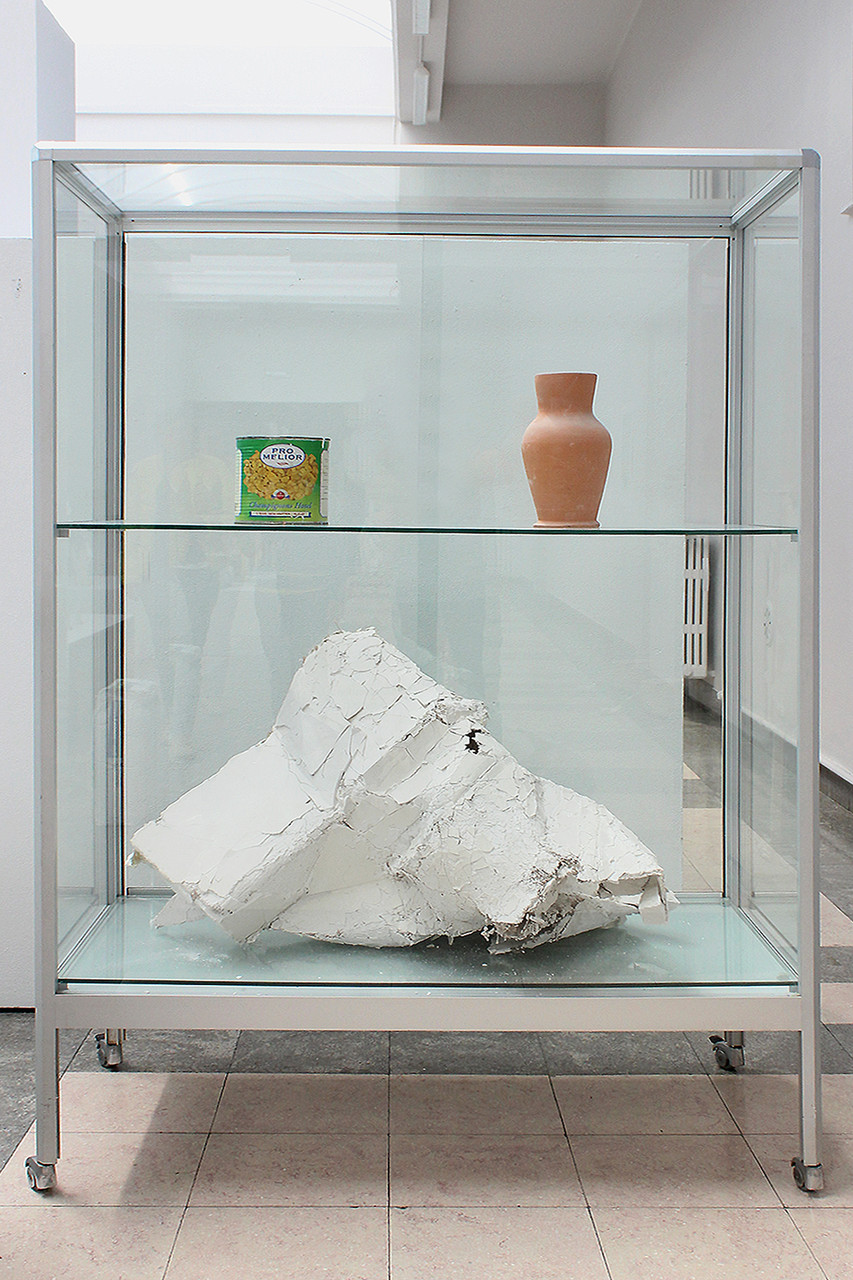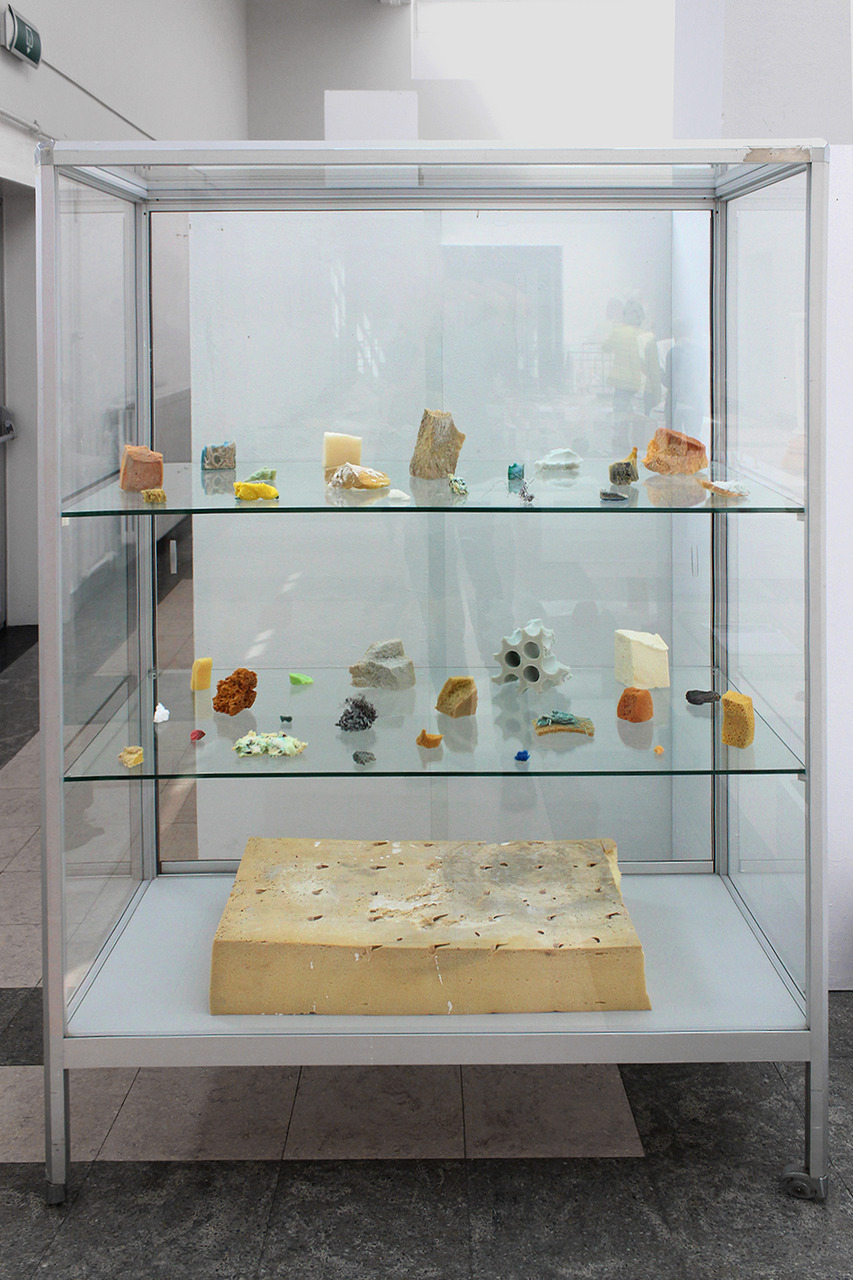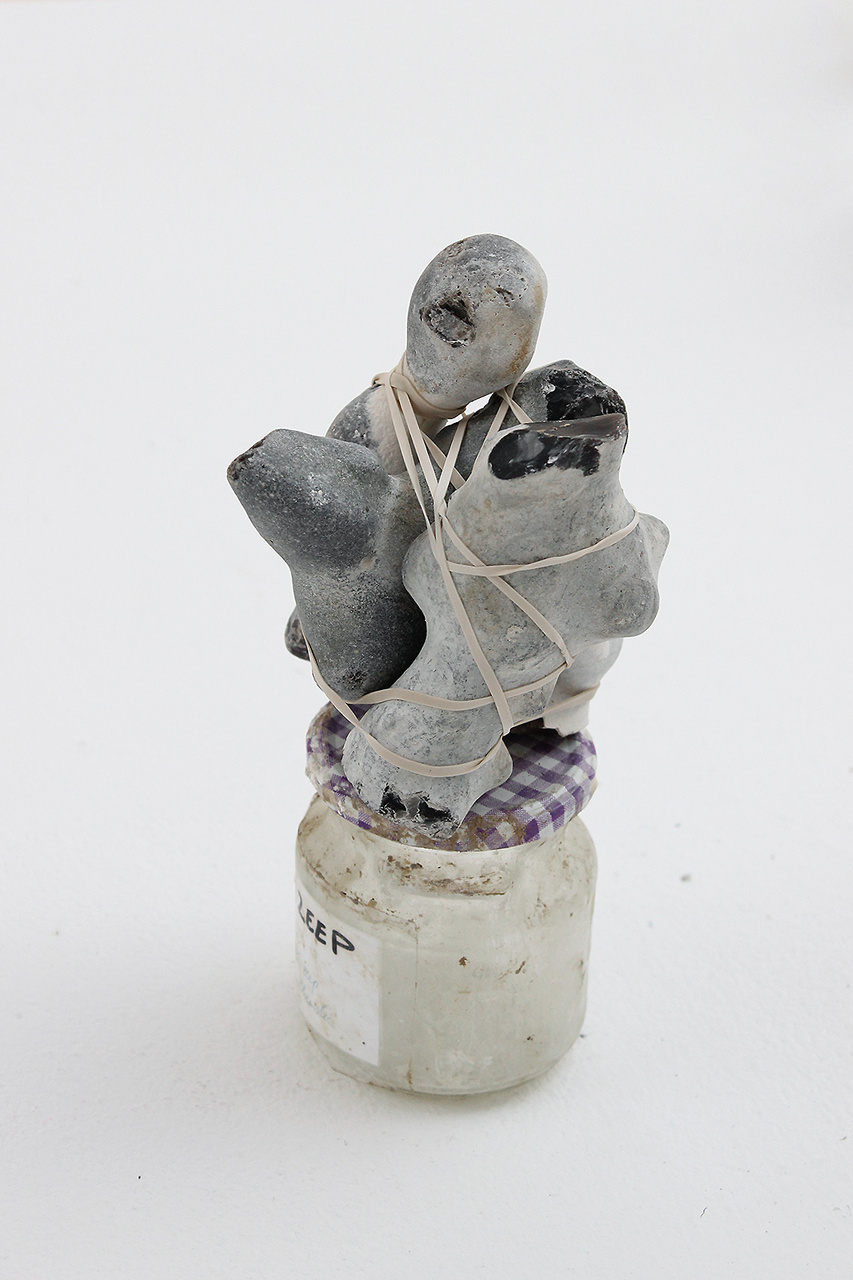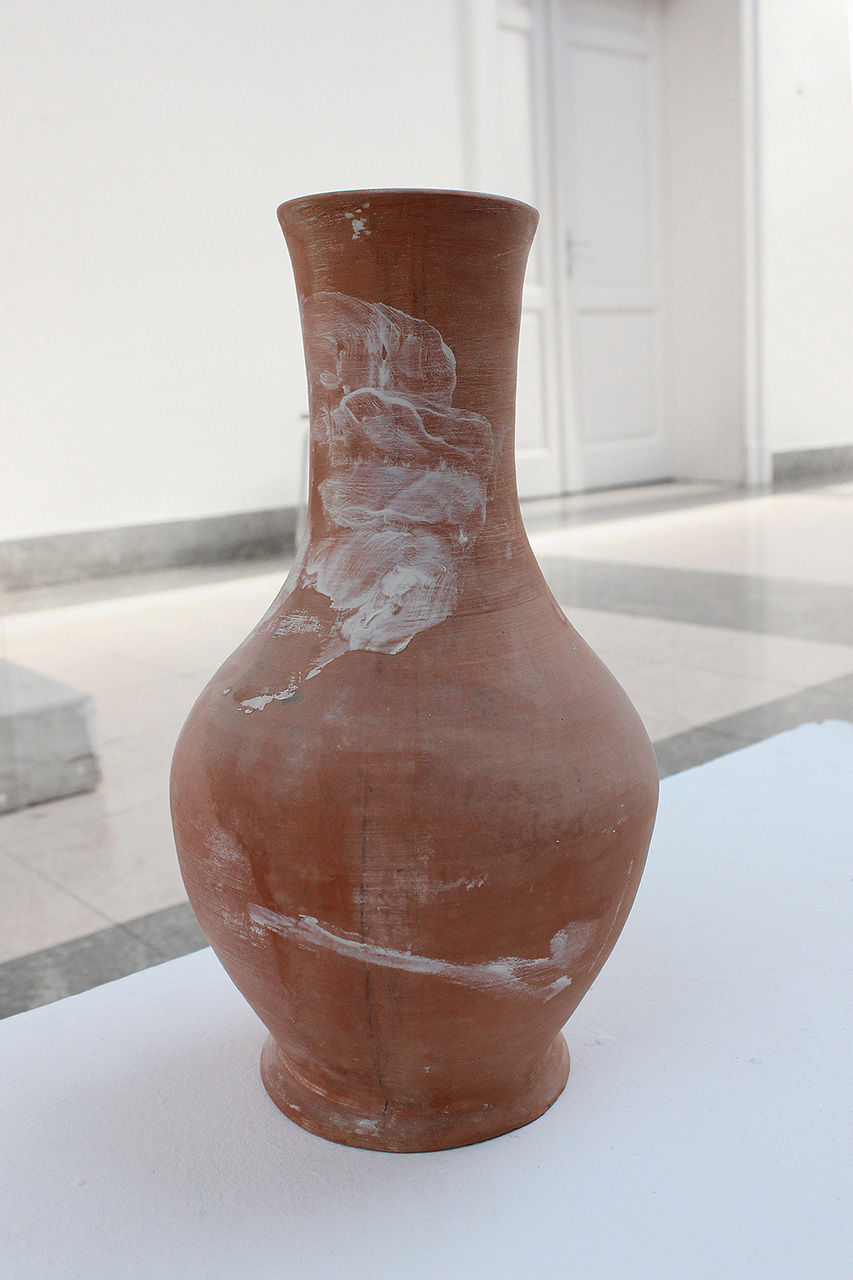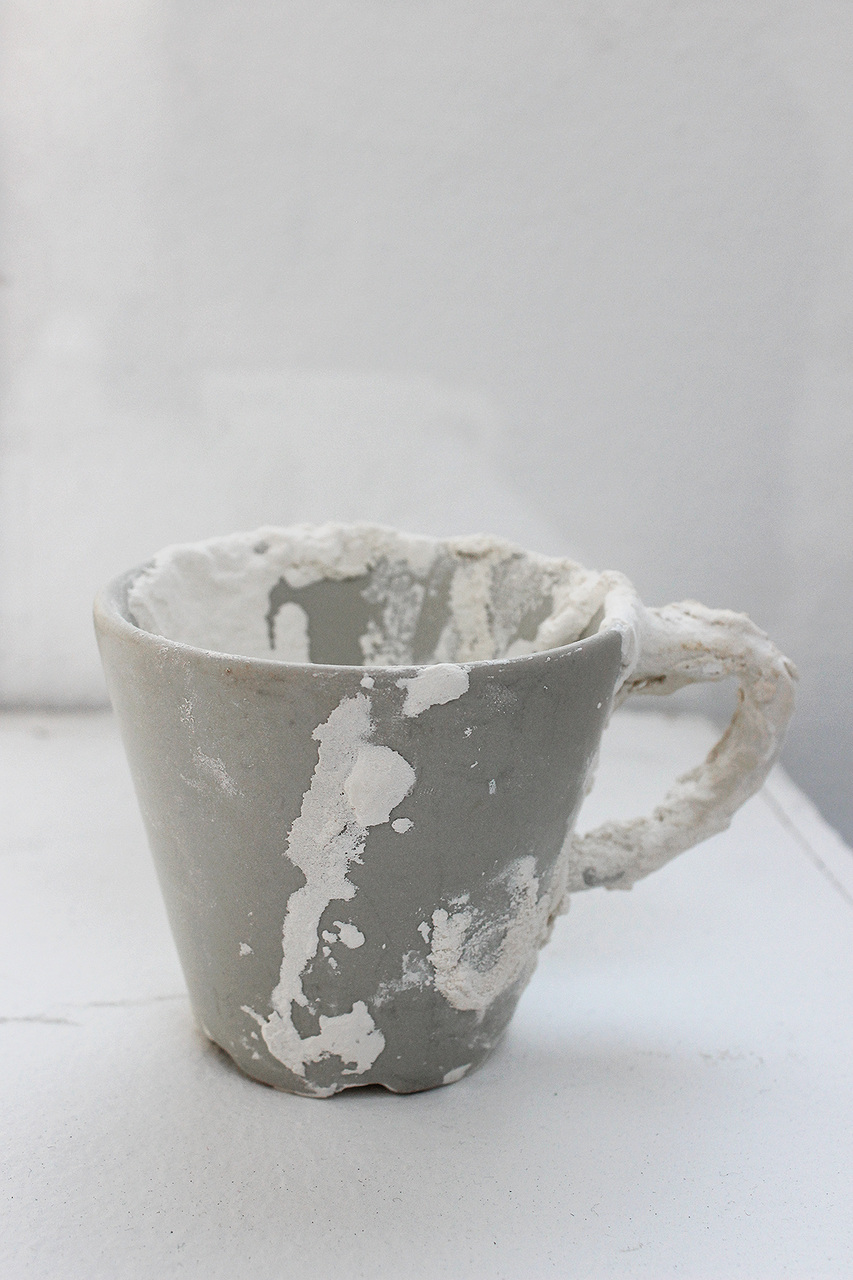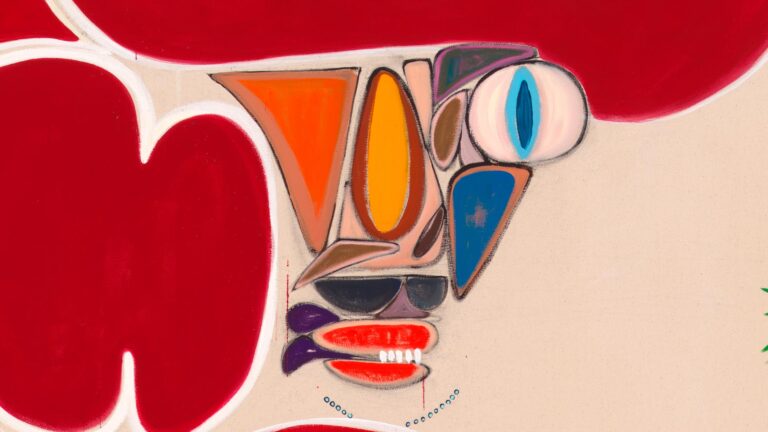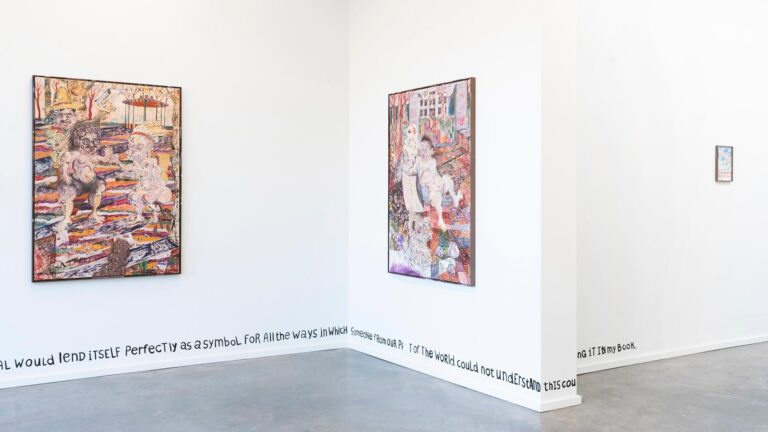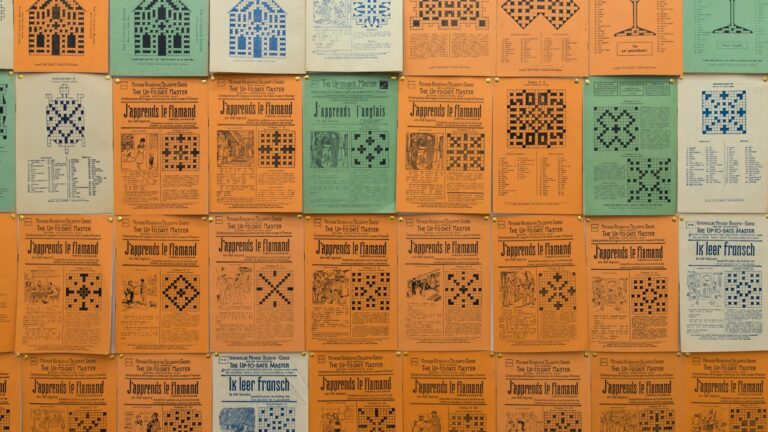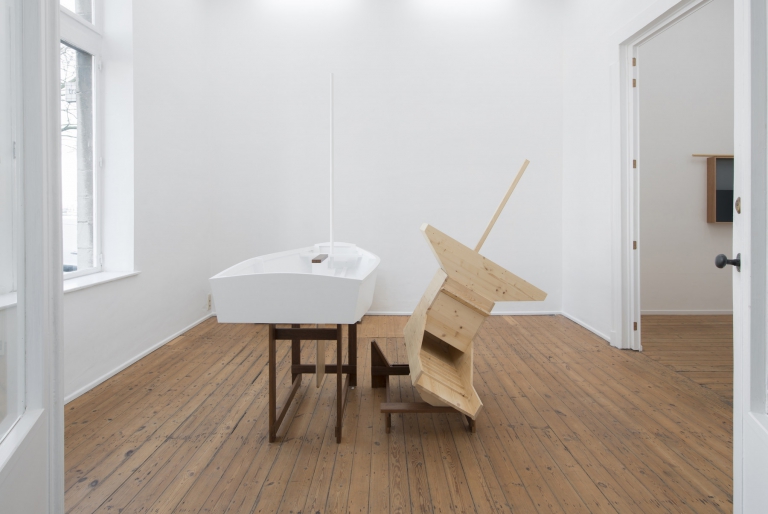Artist: Nicolas Lamas
Exhibition title: Potential Remains
Curated by: EXEMPLAR
Venue: DASH, Kortrijk, Belgium
Date: April 20 – May 3, 2015
Photography: Alexandra Colmenares, images courtesy of the artist and DASH
Potential Remains, a project of the Peruvian artist Nicolás Lamas (Lima, 1980), shows his study of the relationships between the physical and the virtual, the classic and the contemporary by questioning various models of (re)presentation and documentation. In two physically different spaces but complementary in layers of meanings, Lamas presents two installations at the Academy of Kortrijk where Dash is located.
On the ground floor we enter a digital scenario with three projections, that in some cases remind us of the error images on television when different channels synchronize as a result of poor reception. The data of error was of great importance in putting together these collages made with images of different art works and exhibition spaces found on the Internet (on sites such as Contemporary Art Daily). Within one projection we recognize the removal of data to obtain a new visual result while in the other projection juxtaposed layers of visual documentation are combined to create a new image. Lamas chose different images of artworks and exhibition views while surfing through virtual space like a flaneur. These images were manipulated and transformed into new works, using digital tools such as Photoshop, and presented in a continual loop referring to the overabundance of images that come to us every day. Our experience with contemporary art nowadays is mainly determined by our confrontation with artworks and exhibition views on the screen. How do these images influence our references and vision of contemporary art practices?
On the first floor Lamas has created a constellation composed by various found objects from the Academy. This time he moved physically like a flaneur through the school collecting objects to be incorporated in a new system. From this intuitive quest he created a presentation model using pedestals, plexiglass and other materials as the fundamental part of the spatial structure. This all is held together by the relationships between the objects and the tension to become part of something else. During this process he has organized, systematized and examined the different elements when they come to stand in relation to each other and how relative are their functions within a certain context. The objects obtain and simultaneously create new meanings, references and values established when one moves further through the space and becomes aware of the mutual relations that constitute this floor.
Several reproductions in plaster of marble sculptures from classical antiquity spread over the whole space take an important presence into the installation. The sculptures once served as ideals of the perfect model of the body but now these hollow reproductions have a fragile and fragmented presence. The reproductions of these sculptures make this display archaic and closely related to a museum presentation. This is reinforced by the architecture of the space and the conscious choices that Lamas made in arranging the elements in the exhibition hall. With a closer look at the reproductions of the sculptures, one notices how the decay of the glorification of the body is present. Some of them are damaged, fragmented and mutilated, reinforcing the idea of transformation process within the cycle of things. The architectural frame and museum presentation give a new aura to the objects used in the installation, redefined them as a part of a connected whole. On the other hand, some blocks and images of marble patterns also take a prominent place in the interactions between all these objects derived from different areas of the school. New dialogues with the reproductions of classical sculptures are created, giving another character and consistency to the idea of matter.


